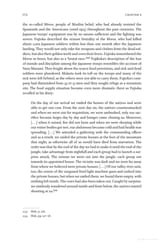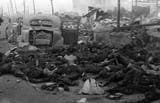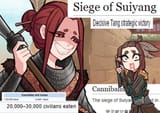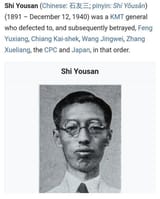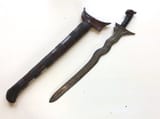Anonymous
10/9/2025, 9:15:33 PM
No.18059426
>>18059858
>>18060052
>>18060054
>>18060064
>>18062800
>>18063907
>>18063942
>>18064022
>>18065185
>>18066712
>>18075547
Moro Muslims used bladed weapons (keris, bolo) to slaughter Japanese
Moro Muslims used bladed weapons (keris, bolo) to slaughter Japanese and hack them to death.
https://www.positivelyfilipino.com/magazine/the-battle-of-tamparan-and-the-forgotten-moro-heroes-of-world-war-ii
>The Battle Of Tamparan
>In September 1942, the Maranaos dealt the Japanese a stunning loss when, in a spontaneous attack, a collection of villagers armed primarily with blades nearly annihilated an entire company of Japanese infantry. The Battle of Tamparan was the gravest defeat inflicted on the Imperial Japanese Army by irregular forces in the Philippines and quite likely their greatest loss at the hands of civilians in the entire course of the Pacific War. For the Japanese infantry, it was a defeat as improbable, shameful, and symbolically charged as that suffered by the U.S. cavalry at the Battle of the Little Bighorn but, unlike that iconic defeat, it has been mostly lost from history.
>Some soldiers attempted unsuccessfully to surrender. One of the company’s officers, First Lt. Atsuo Takeuchi, made it back to the pier with a few of his men, but the boat crews, who were forced laborers, had dived overboard when they saw how the battle was going. With no way to escape, he dropped his sword and raised his hands in submission. Takeuchi had been very active in propaganda efforts among the Maranaos and had often bragged that the Japanese, unlike the Americans and Filipinos, never surrendered. According to Edward Kuder, an American colonial official hiding with the Maranaos, and the only contemporary chronicler of the battle, one young Maranao remembered those boasts and yelled, “No surrender, Takeuchi!,” before cutting him down with his sword.
>Of the 90 Japanese infantrymen who marched down the Tamparan pier that morning, 85 now lay dead on the muddy lakeshore; their lacerated bodies, sprawled individually or tangled together in clumps of blood-soaked khaki, dotted the trampled grey marshland.
https://www.positivelyfilipino.com/magazine/the-battle-of-tamparan-and-the-forgotten-moro-heroes-of-world-war-ii
>The Battle Of Tamparan
>In September 1942, the Maranaos dealt the Japanese a stunning loss when, in a spontaneous attack, a collection of villagers armed primarily with blades nearly annihilated an entire company of Japanese infantry. The Battle of Tamparan was the gravest defeat inflicted on the Imperial Japanese Army by irregular forces in the Philippines and quite likely their greatest loss at the hands of civilians in the entire course of the Pacific War. For the Japanese infantry, it was a defeat as improbable, shameful, and symbolically charged as that suffered by the U.S. cavalry at the Battle of the Little Bighorn but, unlike that iconic defeat, it has been mostly lost from history.
>Some soldiers attempted unsuccessfully to surrender. One of the company’s officers, First Lt. Atsuo Takeuchi, made it back to the pier with a few of his men, but the boat crews, who were forced laborers, had dived overboard when they saw how the battle was going. With no way to escape, he dropped his sword and raised his hands in submission. Takeuchi had been very active in propaganda efforts among the Maranaos and had often bragged that the Japanese, unlike the Americans and Filipinos, never surrendered. According to Edward Kuder, an American colonial official hiding with the Maranaos, and the only contemporary chronicler of the battle, one young Maranao remembered those boasts and yelled, “No surrender, Takeuchi!,” before cutting him down with his sword.
>Of the 90 Japanese infantrymen who marched down the Tamparan pier that morning, 85 now lay dead on the muddy lakeshore; their lacerated bodies, sprawled individually or tangled together in clumps of blood-soaked khaki, dotted the trampled grey marshland.
